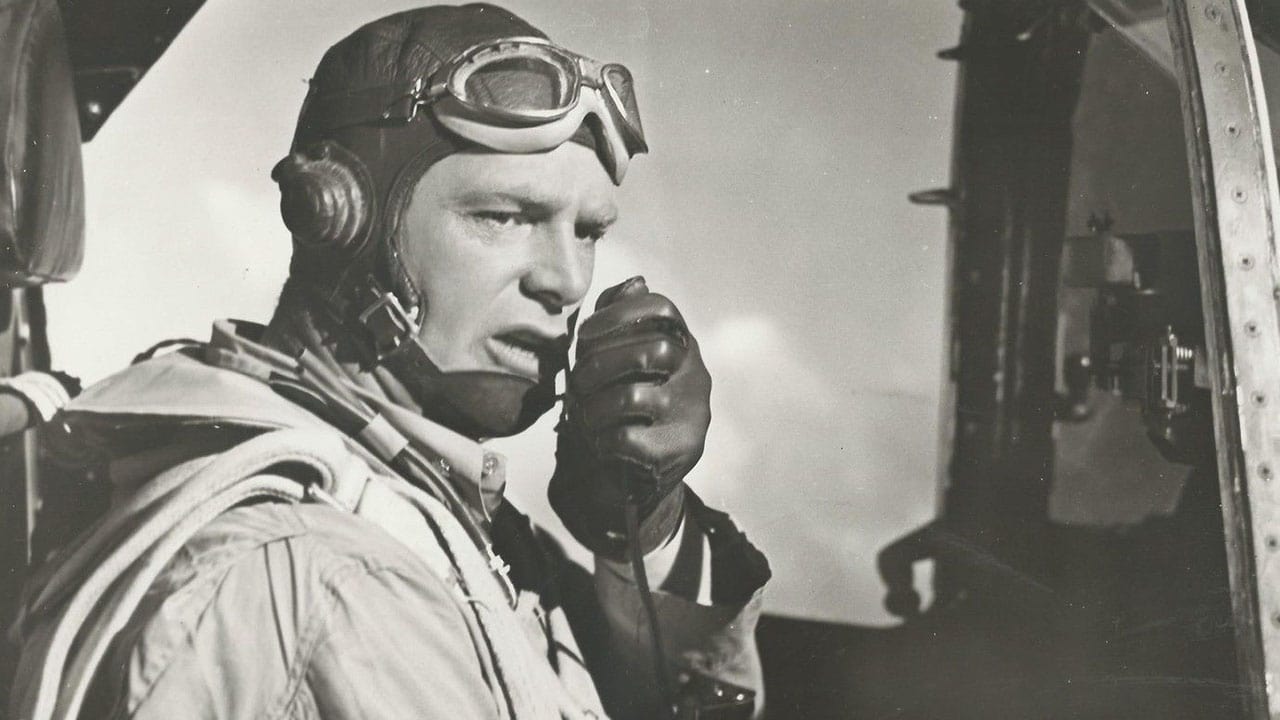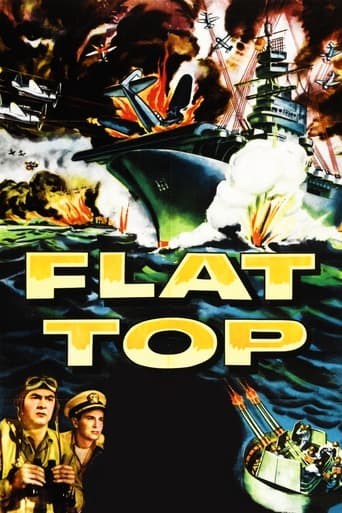

While other reviewers rush to relegate this movie to B-movie status and criticize its then-characteristic (for 1952) sloppy use of stock footage, I expect to be watching this movie again from time to time. This is truly one of those they don't make anymore. The point no one else on here seems to have noticed is the 1950's era docudrama undertone it has that you typically won't see in the more story-focused A-list movie, and how much that quality adds to this movie. It might easily have been subtitled (with a drum roll), "Your United States Navy Aircraft Carrier In World War Two, And Today" ("Hand, SALUTE!"). While the plot and characterizations are thin, shopworn, cliched, and not particularly realistic bits of trite melodrama (there is some really classic corn here; and could the ever-stolid Sterling Hayden playing a hero ever do anything else?), the real story here is to give you some sense, however light, of aircraft carrier operations in the last year to year-year-and-a-half of the war, and in this it could be worse. The plot commences by introducing the squadron members, with the evident aim of showing the slice of American life represented by the new pilots deploying for their first combat roles. From there it moves to a treatment (albeit, very light-weight) of operations and life aboard (including, significantly, the sometimes ample downtime these guys could experience, ranging from card games to the inevitable mail-call; it makes the point that life on board a ship is most often more than just eat-sleep-fight-repeat). The light losses the ship and squadron experience are also believable for this period, since the vast majority of Japan's most skilled pilots had by then been killed in previous battles, most notably in the loss of no less than four big-deck carrier loads of their best naval aircrew at the Battle of Midway back in 1942, followed by their losses in the Solomon Islands beginning later that year and in 1943. Unlike the United States, Japan did not devote sufficient resources to training new pilots for combat, so that by the time our heroes in this movie show up, the average Japanese pilot was lucky to be able to take off and eventually make it back to safely land at his home field without injuring himself, with the question of being effective in air combat against a decently-trained and well-equipped enemy being something they could not begin to answer adequately. (Indeed, it was this aspect of Japanese military aviation which contributed to the adoption of "Kamikaze" tactics about the time this movie takes place; it was far easier in time, effort, and increasingly-scarce aviation fuel to teach a raw recruit how to take off and fly someplace, and then crash himself into something, than to make a real pilot out of him. With Kamikaze tactics not only did you not need to teach a guy how to fight his airplane, you didn't even need to teach him how to find his way home, and then land. To the contrary, such training would actually make him a less motivated Kamikaze, because he might then decide he had an option to crashing his plane against an American target, to his immediate and irrevocable death.) This state of affairs also explains the incredible toll of Japanese aircraft in the "Marianas Turkey Shoot", also depicted in the film, where hundreds of Japanese planes were shot down in a single day, losses which in normal World War II air battles would have been more like ten times less even on the worst of days. Best of all is the use of all the genuine stock footage seen in this movie. While the casual cutting turns the film into a veritable continuity error festival, to plane-spotters that is all the better, because you get to see just about every American naval combat aircraft in the inventory at one point or another, in actual wartime operations and better still, in color. While many of the clips used have been used repeatedly over the ensuing decades in television, movies, and innumerable documentaries, until recent years they had been copied over (and over again) in black and white, and to see all these color originals must have been very unusual and a special treat back in 1952. (At this point it might be worth mentioning that the use of F4U Corsairs in this movie is a significant anachronism. The Navy never deployed this kind of plane on carriers before Okinawa in 1945; surely the reason you see them in this movie is that by 1951 when it was shot, they would have been the last propeller-driven World War Two fighter aircraft the Navy still used, and so to get fresh, exciting, cinematic-quality footage of flight deck operations they would have to be substituted for the F6F Hellcats these pilots would have really flown in 1944 and before Okinawa in 1945, at a minimum. This is also the reason why all the rear-projection shots of squadron members in flight show F6F's in the background, a cinematic mixing of metaphors if there ever was one.) Anyway, for these qualities I give this movie a seven out of ten; its plodding plot and characters are balanced out by getting a glimpse, however Hollywoodized, of carrier onboard life in the latter part of the war and post-war periods.
... View MoreThe opening credits and martial music seem rather grand to be bearing the infamous name of poverty row purveyors Monogram Pictures - now moving (for them) upmarket and soon to rebrand themselves Allied Artists - by whose standards this production by Walter Mirisch (who later gave us 'The Great Escape') obviously represented a prestige project. Those with a knowledge of US military aircraft will as usual have a great time pointing out all the mismatched aircraft footage (just as trainspotters never tire of pointing out that the rolling stock is all wrong in any film with a railway setting); but the 16mm Kodachrome film shot by enterprising wartime cameramen was already proving a gift that keeps on giving, of which this early production was an early beneficiary, aided by Cinecolor photography by Harry Neumann and art direction and editing by David Milton and William Austin that reasonably unobtrusively blends the original footage with studio work and scenes actually shot on the USS Princeton.The names of Sterling Hayden and Richard Carlson gave a strong hint as to what to expect, and sure enough we get the usual conflict between granite-faced by-the-book disciplinarian Hayden and nice guy Carlson who comes to appreciate the wisdom of Hayden's anti-charm offensive on the new boys (who include a youthful-looking William Schallart in a surprisingly substantial early role as 'Longfellow').The film holds your attention for the most part, although Marlin Skiles' music increasingly emphasises exhilaration rather than grim determination on the part of the flyers; and I did find my attention starting to wander during the final twenty minutes when the excitement was supposed to be at its height.
... View MoreA story of a green squadron on a US carrier in the Pacific in 1944. When they land on the USS Princetown, they find their new CO is a cold, tough as oak, stickler for the book. The CO also delivers his lines as though he's made of oak. There is plenty of good flying action. I also liked the historical footage of battleships conducting shore bombardment. The plot is leaky and the squadrons' planes morph from Corsairs, to Hellcats and even to Helldivers. It is all pretty predictable and the characters are hard to feel attached to. But I think the hardest thing to stomach is the levity displayed by the US pilots when they are killing people. It's a war people, not a football game.Das Boot, Enemy at the gates or even Tora Tora Tora are a much better bet for your evening battle flick.
... View MoreThis film seems to never go away. I am not sure why. Perhaps because of Sterling Hayden, perhaps because of the footage of WW2 vintage aircraft and ships. I am fan of both but there is just not much to this. Hayden is on a carrier near Korea and starts recalling his WW2 days and we go quickly to an extended flashback of that. From then on, we get predictable scenes on the carrier involving the various personal issues of the pilots interspersed with stock Navy footage edited into dogfights, formations flying, bombing runs, landings and takeoffs. That is it, don't hope for anything else. The aerial footage itself will not satisfy the purist unless you hope to entertain and flatter oneself with identifying all its inconsistencies. Pilots can take off in a Hellcat, fly in a Corsair, bomb in a Helldiver or Avenger and then land in a Hellcat even though they are supposed to be part of a 1944 Navy fighter squadron which should almost certainly be using Hellcats exclusively. It is really quite an impossible mishmash that would give a good chuckle to any pilot from the time.
... View More